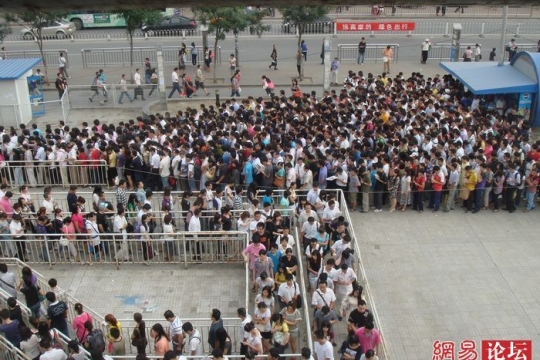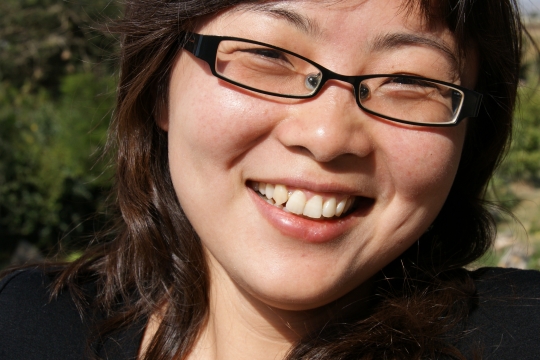Beijing is the world´s most congested city as measured by average vehicle speed. It is also one of the most air polluted cities, with a substantial part of the emissions coming from vehicles. To find effective policy instruments to address these serious urban challenges, Environment for Development in China/the Environmental Economics Program in China (EEPC) and Beijing Transportation Research Center are collaborating in a research program.
Dr. Ping Qin, EfD research fellow in China, returned to Beijing in 2010 after completing her PhD studies at the University of Gothenburg in Sweden and working at Resources for the Future in Washington DC for one year.
“It was terrible to go to work in the morning in Beijing. When I returned to China, I stayed with a friend in the east part of Beijing whereas Peking University, where I work, is in the west part. I had to spend one hour in the overcrowded subway system every morning. That is a very bad, exhausting experience. Several friends of mine now want to buy a second home or rent a temporary place so they don’t have to spend so much time travelling,” says Ping Qin.
According to World Bank (2007), the costs of health damages associated with urban air pollution in China, i.e. sickness and premature death, ranged from 1.2 to 3.8 percent of GDP in 2007, which makes air pollution the costliest pollution faced by the country.
Ping Qin is the principal investigator in one of the projects of the new research program on urban transportation and environmental policies in Beijing. She and Professor Jintao Xu will analyze the social costs of air health damages associated with urban air pollution in the capital.
Qin and Xu will also analyze the costs of congestion in terms of value of time. For this they need to know for instance how much Beijing inhabitants are willing to pay to save transportation minutes and avoid crowding and pollution.
“Today we don’t know enough about the impact of the policy instruments in place in Beijing, such as the low subway fare policy. Nor do we know enough about the potential impact of some suggested and hotly debated policies, like congestion charges and environmental taxes. We hope this collaborative research program will give important answers to these questions,” says Qin (left).
The starting point of the research program was an international workshop on urban transportation management and environmental policy, organized by EfD/EEPC and co-sponsored by the Beijing Transportation Research Center. It was held in Beijing 15-16 August 2010 and brought together participants from the Beijing Transportation Commission, Kagawa University of Japan, Resources for the Future in Washington DC, University of California at Berkeley and other US universities, the World Bank, and several municipal government agencies in Beijing.
Besides EfD research fellows Ping Qin and Jintao Xu, the transportation research program engages EfD associates Professor Peter Berck and Dr. Lunyu Xie. Their research includes:
• Analyses of the distributional welfare impacts of various transport policies, and analyses of the effect of these policies on travelers’ choice of transport mode.
• Analyses of the optimal pricing of subways/buses, and analyses of optimal pricing of congestion fees.
• Studies to better understand consumer preferences regarding different car models. This is important in order for policy makers to effectively intervene in the automobile industry through regulatory policies aimed to alleviate traffic and reduce emissions from the transportation sector. In China the city of Beijing ranks number one in terms of the society cost paid for city congestion, according to the 2009 Futian Index.
7 million cars in Beijing in 2015
“In Beijing alone, we now have 4.5 million cars. The government expects the city to have 7 million cars in 2015,” says Qin.
Prior to the 2008 Olympics, a driving restriction program based on odd-even license plates was introduced in Beijing. Evidence of reduced congestion and mobile source pollution induced the Beijing municipal government to continue with a similar but less restrictive program after the Olympics.
“In the initial one-year period it seemed effective and was claimed to be a success. But the international experience is not optimistic. Research has shown fairly conclusively that this type of program does not reduce vehicle miles traveled or improve air quality. For example, it has been implemented in Mexico City for ten years and has proved not successful. Rich people can buy a second car. In Beijing the second-hand car market has become very active,” says Qin.
The low subway/bus fare policies implemented in Beijing have shown to be unsuccessful to decrease car driving as well. Subways and buses were already overcrowded before the fare reduction, and could barely hold any more passengers during rush hours. The fare was already low before the policies, and the reduction was probably not large enough to attract people who can afford a car. Instead, it is rather an incentive to low income people to take the subway or bus instead of walking or biking.
“In addition, the low fare policies imply a heavy financial burden to the government. The National Development and Reform Committee now want to know the impact of an increased subway fare before it might be implemented in Beijing. The NDRC commissioned the Beijing Transportation Research Center to do a study on this, and they in turn wanted us to do it,” says Qin.
By Karin Backteman

